Meet the yellow-crowned bishop (Euplectes afer), a small and sociable bird adorned in a stunning yellow plumage, separated by a bold ink-black sash snugly wrapped around its waist.
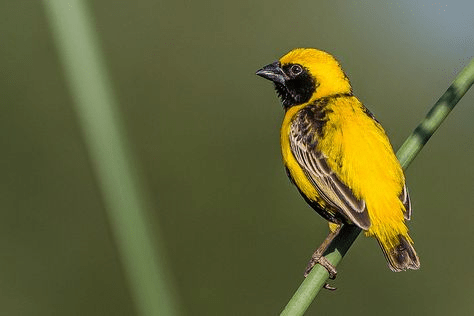
Native to Africa south of the Sahara, the yellow-crowned bishop belongs to the passerine bird family Ploceidae. Measuring approximately 3.7 inches in length, this species exhibits 𝓈ℯ𝓍ual dimorphism, with the distinguishing characteristics of males becoming more pronounced. During the breeding season, the male boasts a remarkable combination of golden yellow and black feathers.
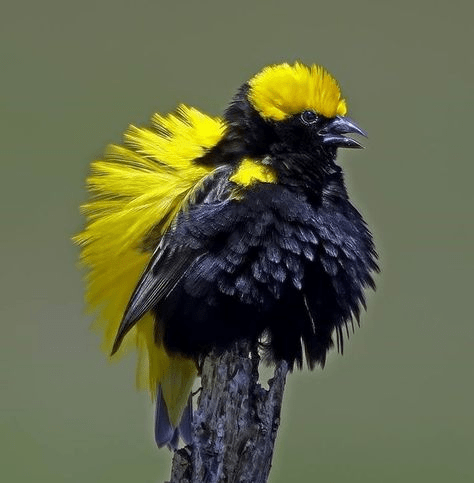
His bill turns black, while it takes on a horn-colored hue when he is not breeding, resembling that of the female. The lower face, throat, breast, and belly of the male are adorned in rich black plumage, accentuated by a wide black collar encircling the back of his neck. Adding to its striking appearance, the male features a brilliant yellow crown, forehead, and hind crown, along with a yellow patch on the shoulder. The rump and back of the bird also display a vibrant yellow shade, while its legs and feet take on a pinkish-brown color. The wings and tail, however, exhibit a brown hue.

In contrast, the female yellow-crowned bishop exhibits a more subdued appearance. Her upper parts are pale brown, adorned with darker streaks. Her eyebrows and underparts are pale, with fine dark streaks present on the breast and flanks.
Outside the breeding season, the male adopts a more similar appearance to that of the female.
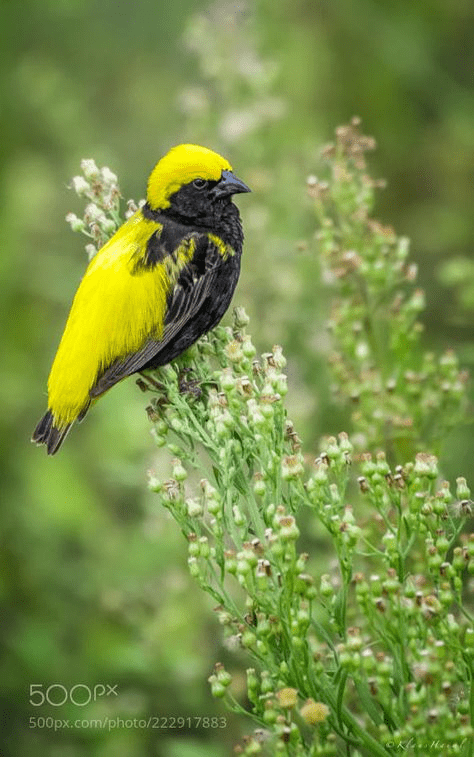
The yellow-crowned bishop is found naturally in various African countries, while also being introduced to Jamaica, Japan, Puerto Rico, Portugal, Spain, and Venezuela.
These birds prefer habitats such as grasslands, vleis, and pans. They particularly thrive amidst wheat, sorghum, weedy vegetation, and wetlands.
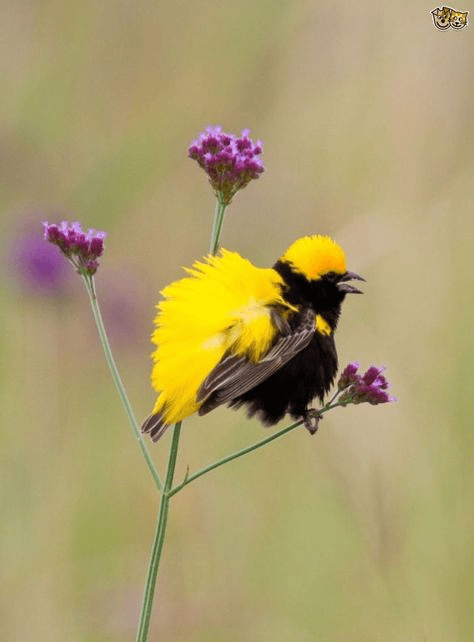
Feeding on a diet of insects, grain, and seeds, the yellow-crowned bishop maintains its nourishment.
The nesting season for this bird spans from November to May, peaking from December to March. During this time, the male constructs two or more oval nests with a top opening, artfully positioned among standing grass or sedge stems. He cleverly employs built-over grass stems to conceal his creation. Once the female selects the ideal nest, she lays two to four eggs within it, diligently incubating them for approximately 12 to 14 days. The chicks venture out of the nest after 11 to 13 days.
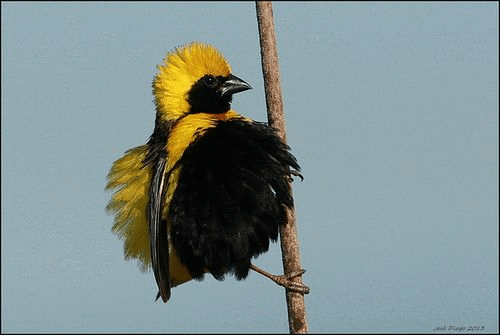
Due to its extensive range, both within Africa and globally, the yellow-crowned bishop is considered to be at least concern on the IUCN Red List.





